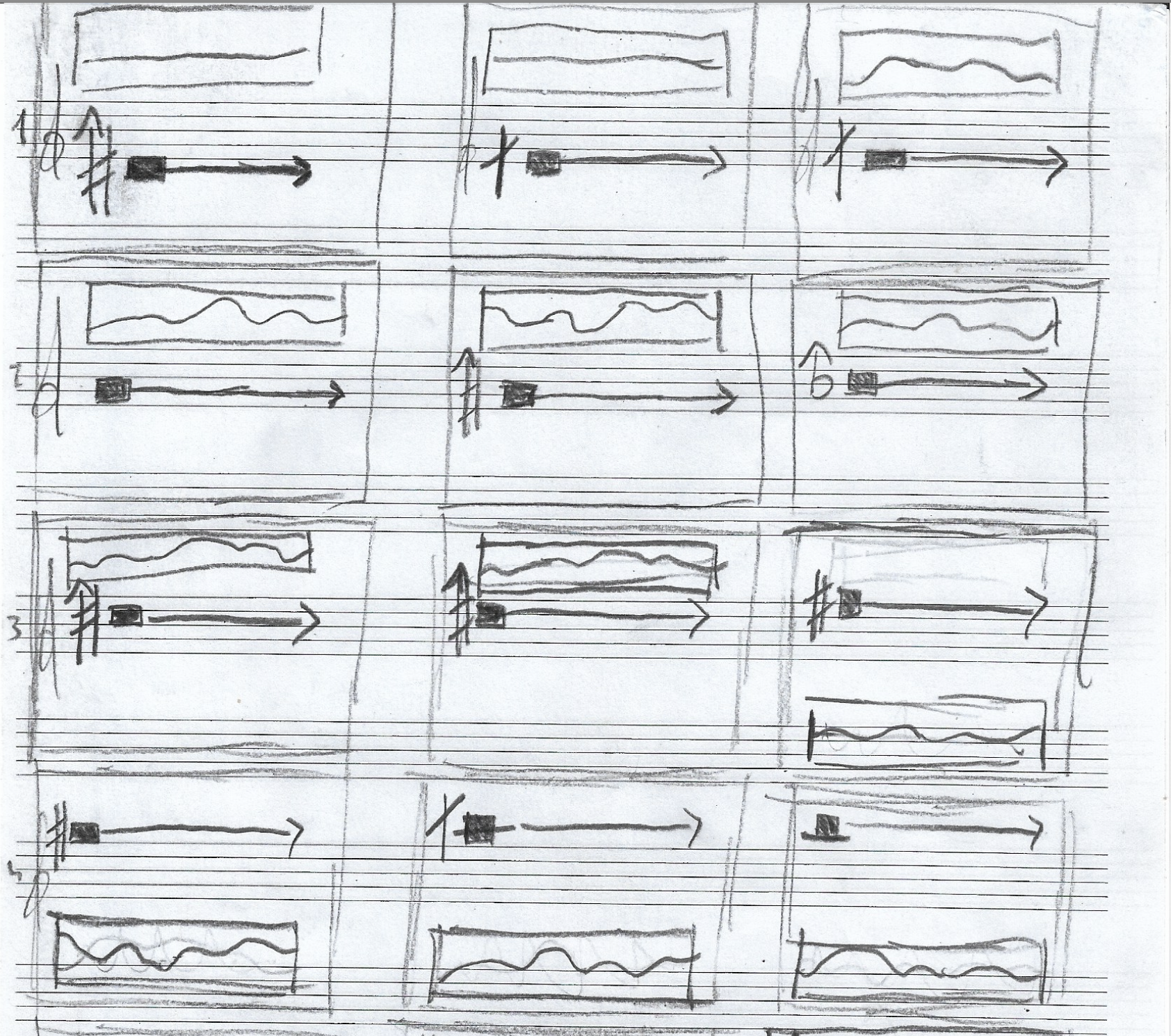Depiction through timbre is also used in the music-theatre piece TRAPPIST-1. During Scene 2 - “Atacama”, we focus on Amaury’s experience in the Chilean observatory of La Silla, in the Atacama Desert[82]. One of the descriptions we took from the interview informed timbrically the last section of this scene. Related to the scene’s main theme, isolation, he described to us that his stay at the observatory was like a “monastic experience”.
This concept is represented in the piece by imitating a composition practice from the mediaeval monasteries: the organum. It consists of adding an extra voice to a plainchant melody, mostly in parallel motion, and transposing a perfect fifth or a fourth. In the piece, the flautist performs an organum by combining playing a series of notes and singing simultaneously a fifth above on the bass flute[83]. The pitch material for this effect is taken from one of the banks of material used during the semi-improvised “Sudden Storm” section of the scene[84]. The pitches in this bank, “out of the usual world”[85], correspond to the scales presented in Figure 5, generated with the distance of the planets to the star. The symbols accompanying the notes are a stimulus for an improvised variation of these notes[86]. They are based on borrowed river plots that show the transits of the planets over 1600 days. The different wavy shapes are the result of the interactions between the different planets, which affect each other’s respective transits, some being early and others late.
